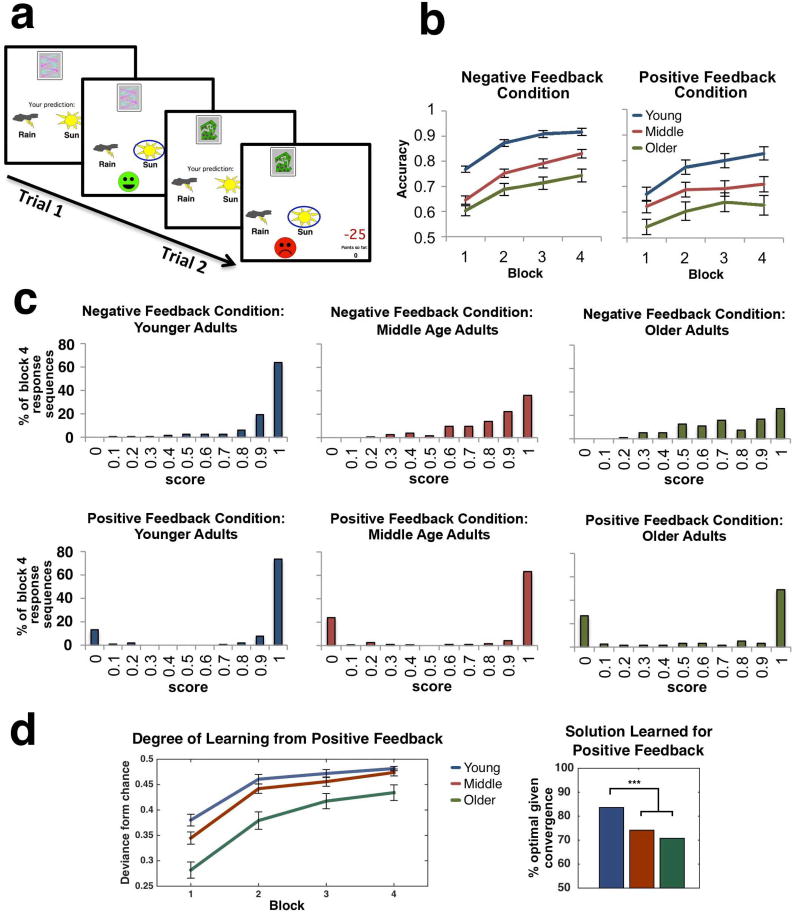Fig. 2.
Behavioral Task and Results for the 252 paricipants. (a) Experimental task. Participants learned to classify 4 stimuli to one of two arbitrary categories (Rain or Sun) by trial and error using probabilistic feedback. Two stimuli yielded positive feedback (smiling face and positive points) on 90% of the trials and no feedback on 10% of the trials. The other two stimuli yielded negative feedback (frowning face and negative points) on 90% of the trials and no feedback on 10% of the trials. Two example trials are presented. (b) Learning curves for the positive and negative feedback conditions. Error bars illustrate standard errors of the means (see Supplementary Information for additional analyses). (c) Distributions of scores on Block 4 for the different age groups. y-axis represents the percent of individual response-sequences within an age group and the x-axis marks each decile of performance score. The scores for stimulus A and stimulus B of each feedback condition were computed and counted separately to avoid the score of one interfering with the other (for example, when one stimulus receives a perfect score and the other zero, they average to a misleading “random chance” score of 0.5). (d) Left, deviance from chance performance, indicating the degree of learning a solution irrespective of the type of solution. Right, percent of optimal solutions given convergence to any solution. Convergence to a solution was defined as at least three consecutive blocks with accuracy reaching higher than 0.9, or lower than 0.1, for the optimal and non-optimal solutions, respectively). *** p<0.0001.

